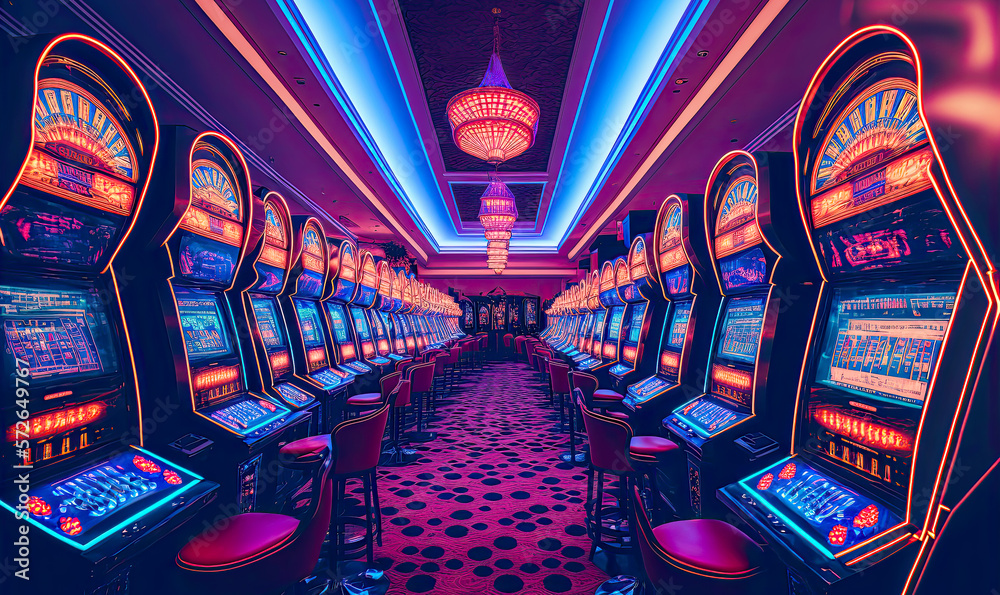
Casino experiences have long captivated the human imagination, drawing participants into a realm filled with luck, strategy, and the allure of excitement. Each game is carefully crafted not just for enjoyment, but also to evoke particular emotional responses that keep participants engaged and interested. Understanding the motivations behind these designs reveals much about how psychology plays a key role in the gaming experience.
From the vivid lights and dynamic sounds to the sophisticated layering of guidelines and incentives, casino games are designed to create an atmosphere of excitement and expectation. Game designers leverage mental cues to influence player behavior, whether through the use of winning opportunities, close-call situations, or community engagement. s666 đăng nhập By examining these elements, we can better appreciate how casino games fulfill not just a need for entertainment, but more profound psychological needs for excitement and risk.
Comprehending Player Behavior
Casino games are crafted with a deep understanding of player psychology, which is essential for attracting and keeping players. The thrill of the game, combined with the hope of winning, produces a strong draw. Game designers utilize elements like audio cues, vibrant graphics, and immersive gameplay to engage attention and evoke emotional responses. These sensory experiences enhance the total environment, making players feel more invested in the game.
Another notable aspect of player behavior is the idea of risk and reward. Casino games often manage risky situations with the potential for substantial rewards, which can result in the phenomenon known as near-miss experience. When players come within reach to winning, the brain releases dopamine, strengthening their behavior and encouraging them to keep playing in quest of that hard-to-reach win. This cycle of anticipation and frustration plays a crucial role in how games are designed and advertised.
Lastly, community aspects also play a pivotal role in player behavior at casinos. Many games are designed to be played in pairs or alongside other players, nurturing a sense of community and communal experience. The interaction inherent in games like blackjack enhances enjoyment and can culminate in longer play sessions. Designers capitalize on this by designing environments that prompt players to linger, socialize, and revisit, making the overall casino experience more appealing.
The Role of Visuals and Audio
Visuals and audio play a vital role in elevating the gambler’s experience within casino games. Designers utilize bold colors, eye-catching graphics, and engaging animations to attract gambler’s attention and maintain their focus. The use of motifs, such as exploration or luxury, helps create an enthralling atmosphere that takes players into another world. By appealing to the senses, these elements contribute to a heightened emotional response, prompting players to engage more profoundly with the games.
Sound design is equally important in reinforcing the experience of gambling games. The combination of ambient music, sound effects for successful combinations, and environmental noises creates an sound landscape that holds players fascinated. Audio cues associated with wins, such as chiming bells or celebratory music, evoke feelings of thrill and reward, prompting players to keep playing. These sound cues are strategically placed to enhance the excitement of the game and create a more immersive experience.
Additionally, the alignment of visuals and audio is important for reinforcing the game’s overall concept and atmosphere. Each element should align harmoniously to create a cohesive experience that pulls players in. The effective use of this integration not only enhances user enjoyment but also increases the chances of return play, as players become more engaged in the captivating world that the casino games offer. This thoughtful combination of visuals and sound ultimately enhances player engagement and commitment.
Incentive Systems and Participation
The creation of casino games heavily relies on reward systems to ensure participants engaged and coming back for additional experiences. These structures are based in behavioral principles that exploit human behavior and desire. Players are often driven by the excitement of success, which is reinforced by instant responses through the game structure’s design. This prompt satisfaction not just improves the overall experience but also fosters a feeling of achievement, encouraging participants to continue playing in hopes of greater rewards.
Casinos adopt various incentive systems, such as large payouts, bonuses, and multipliers, to captivate participants. These features create a layer of thrill that sustains engagement. Additionally, the randomness of results plays a significant role in sustaining interest. The variable reward system, where wins are unpredictable but happen often enough, keeps players on edge and motivated to keep playing. This loop of anticipation and expectation is foundational to the effectiveness of gambling experiences.
Moreover, community aspects, such as competitive events and multiplayer features, boost the participation factor by leveraging the desire to compete of participants. The communal aspect of gaming with others can intensify the excitement of success and create a sense of community within the gaming space. By combining these social dynamics with effective incentive structures, casino games not only offer fun but also foster a deeper connection among players, solidifying their loyalty to the overall experience.